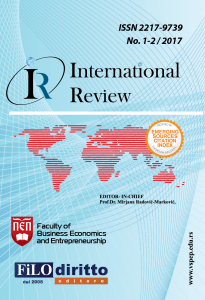Employee organizational commitment
Employee organizational commitment
Author(s): Života Radosavljević, Vesna Čilerdžić, Milan DragićSubject(s): Social Sciences, Economy, Communication studies
Published by: Visoka škola za poslovnu ekonomiju i preduzetništvo
Keywords: Organizational Commitment; Research on Organizational Commitment; Commitment
Summary/Abstract: his paper shows the results of research on organizational commitment as a type of attitudes that show the identification level of employees with their organizations and their willingness to leave them. The research has been conducted with intention to determine the level of organizational commitment on the territory of Novi Sad, as well as to question whether there is a difference between certain categories of examinees for each commitment base. The research comprised 237 examinees employed in organizations on the territory of Novi Sad. Status of independent variables have gained: gender, years of working experience, educational level, working experience in one or more organizations and estimation of level of personal potentials utility. The questionnaire used is taken from the Greenberg and Baron's 'Behaviour in Organizations', p. 170, done according to set of questions by Meyer and Allen, in 1991. The data have been worked on by calculating arithmetic mean, and by application of Pearson Chi-square test. The results have shown that there is a below average level of organizational (AS=2.88), with the most intensive continual (AS=3.23), and the least intensive normative organizational dedication (AS=2.41). The gender of examinees does not represent relevant source of differences in the levels of each type of three mentioned commitment. Years of working experience and level of educational attainment represent a significant source of differences for continual (YWE: Pearson Chi-square = 30,38; df = 8; p = .000) (LEA: Pearson Chi-square = 7,381; df = 2; p = .05) and normative (YWE: Pearson Chi- square = 20,67; df = 8; p = .000) (LEA: Pearson Chi-square = 10,79; df = 2; p = .00 ) base of commitment. Work in one or more organizations has shown as a significant source of differences in the level of continual commitment (Pearson Chi-square = 7, 59; df = 2; p = .05). The level of affective commitment is statistically significantly related only to the estimation of level of personal potentials utility of examinees. (Pearson Chi-square = 22, 99; df = 4; p =.00).
Journal: International Review
- Issue Year: 2017
- Issue No: 1-2
- Page Range: 18-26
- Page Count: 9
- Language: English

